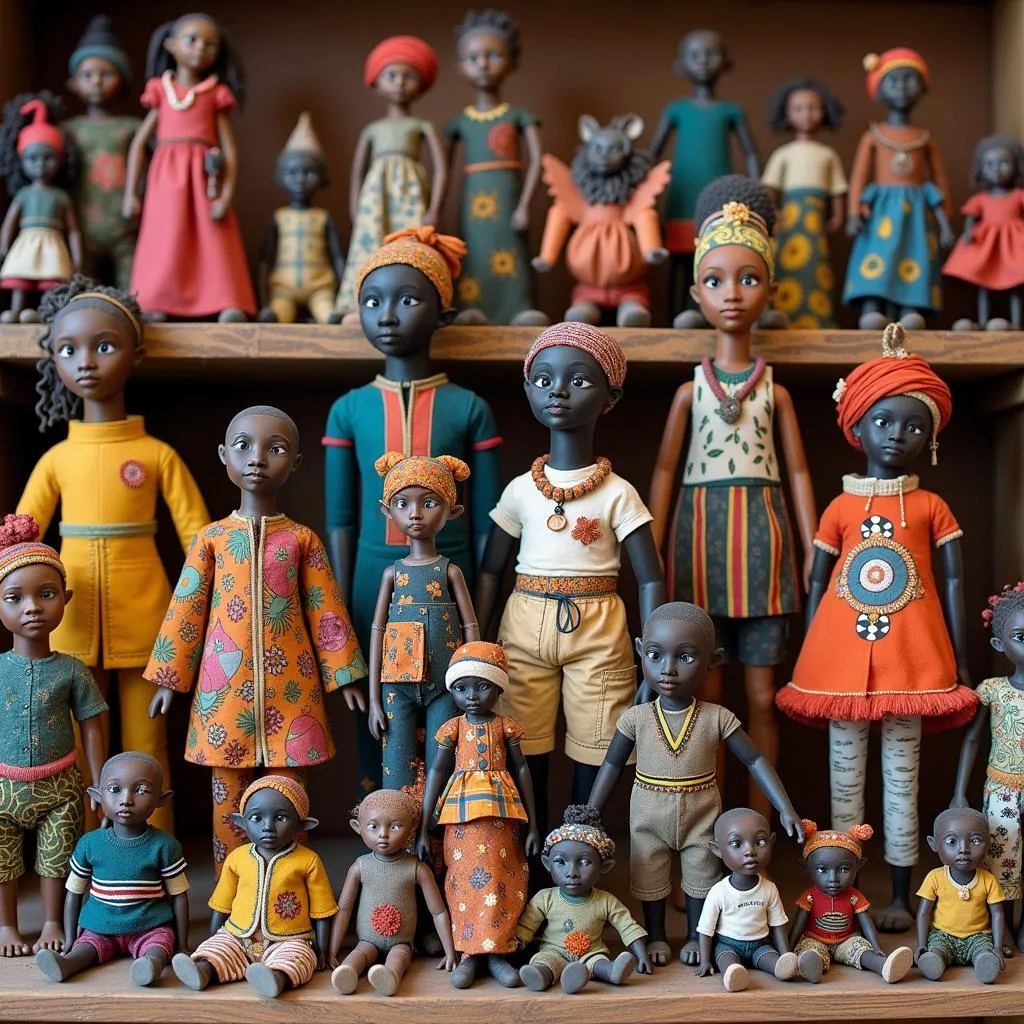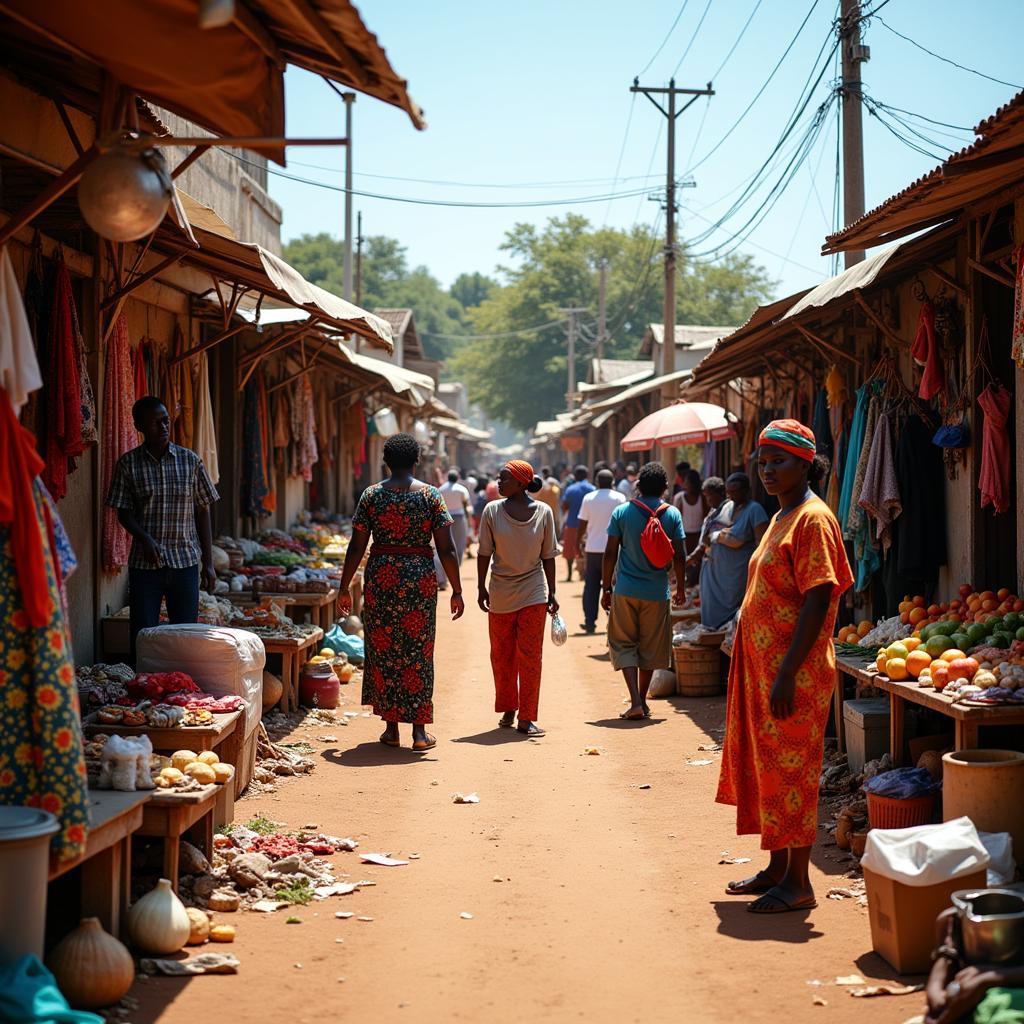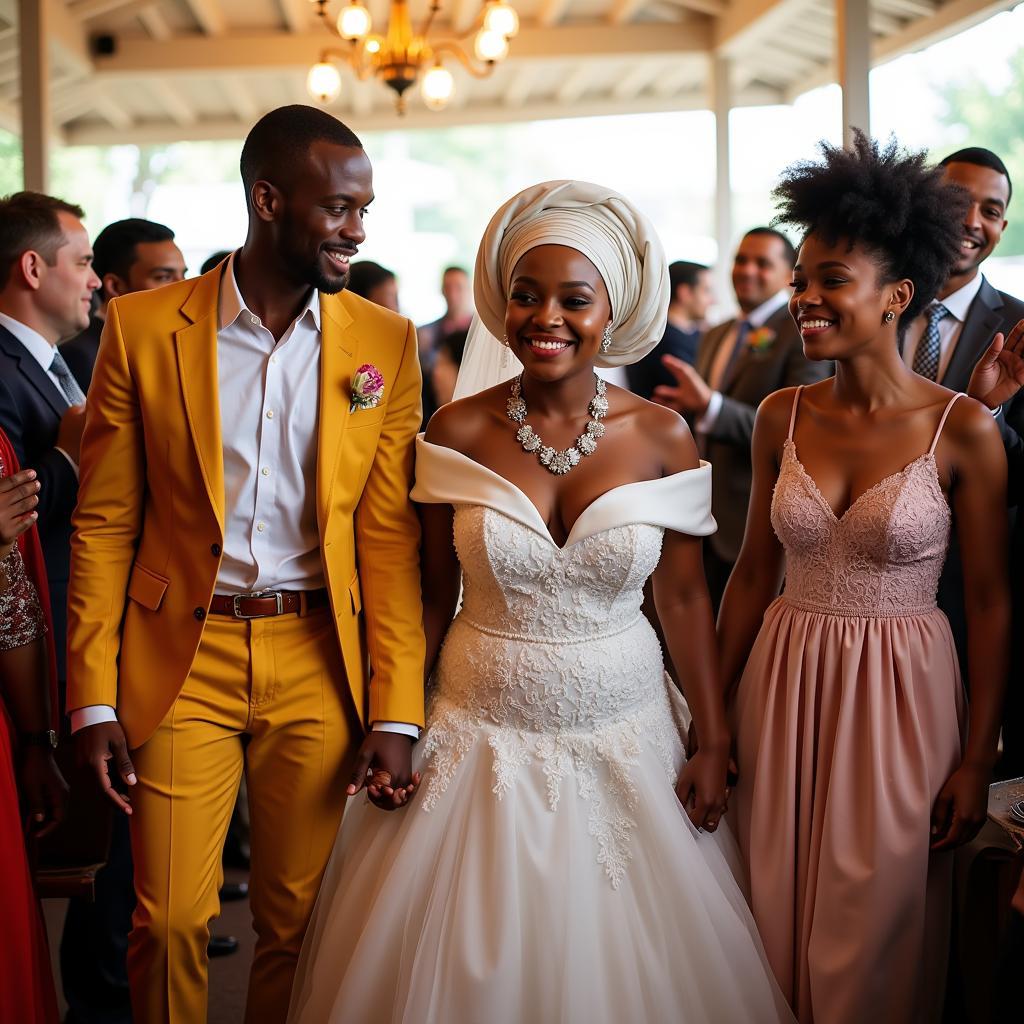Exploring the World of African Cloth Toys
African Cloth Toys, a vibrant tapestry of culture and creativity, offer a glimpse into the heart of Africa. These handmade treasures, crafted from colorful fabrics and adorned with intricate details, transcend their function as playthings, becoming powerful symbols of heritage, storytelling, and artistry.
More Than Just Playthings: Unveiling the Significance of African Cloth Toys
 A variety of African cloth toys
A variety of African cloth toys
Unlike mass-produced toys, each African cloth toy carries a unique story, reflecting the traditions and beliefs of its maker. They are often passed down through generations, becoming cherished heirlooms that connect families to their past. These toys are not merely objects of amusement; they are vessels of cultural knowledge, teaching children about their heritage and instilling values of creativity and resourcefulness.
For instance, dolls play a crucial role in many African cultures. They are not just playthings but are often seen as representations of ancestors, spirits, or fertility symbols. The African folk art dolls are a testament to this belief, often crafted with meticulous detail to embody specific cultural values or represent important figures in the community.
Crafting Joy: The Art and Techniques Behind African Cloth Toys
The creation of African cloth toys is an intricate process that involves a variety of techniques, each unique to a particular region or tribe. From the intricate beadwork of the Maasai to the bold appliqué designs of the Ashanti, every detail speaks volumes about the rich artistic heritage of the continent.
Common materials used in making these toys include:
- Fabric: Ankara, Kente, Mudcloth, and other vibrant African fabrics are commonly used.
- Threads: Strong threads, often in contrasting colors, are used for stitching and embellishment.
- Beads: Glass beads, seeds, and other natural materials are used for decoration.
- Recycled materials: Bottle caps, wire, and other found objects are often incorporated, showcasing the resourcefulness of African artisans.
 An African woman making a cloth toy
An African woman making a cloth toy
Beyond Borders: The Global Appeal of African Cloth Toys
In recent years, African cloth toys have gained immense popularity worldwide, attracting collectors and art enthusiasts alike. Their vibrant colors, unique designs, and cultural significance have made them highly sought-after items. They are increasingly being recognized not just as toys but as works of art that reflect the beauty and diversity of African culture.
The rise of online platforms and fair trade initiatives has also made it easier for people around the world to access and purchase these handmade treasures. This has not only helped to promote African culture but has also empowered local artisans by providing them with a sustainable source of income.
Where to Find Authentic African Cloth Toys
If you’re looking to add a touch of African artistry to your home or find a unique and meaningful gift, there are several ways to find authentic African cloth toys:
- Visit local African markets or craft shops: This is a great way to meet the artisans and learn about the stories behind their creations.
- Shop online: Many reputable websites and online marketplaces specialize in selling authentic African handicrafts, including cloth toys.
- Support fair trade organizations: Look for organizations that work directly with African artisans and ensure fair wages and working conditions.
 A display of African cloth toys
A display of African cloth toys
“African cloth toys are more than just playthings,” says Dr. Abena Addo, a renowned expert on African art. “They are tangible expressions of culture, creativity, and resilience. Each stitch, each bead, tells a story, connecting us to the rich history and heritage of Africa.”
Conclusion
African cloth toys, with their vibrant colors, intricate designs, and cultural significance, are a testament to the creativity and ingenuity of African artisans. They are more than just playthings; they are powerful symbols of heritage, storytelling, and artistry. By embracing and celebrating these treasures, we can not only appreciate the beauty of African culture but also support the livelihoods of talented artisans across the continent.
FAQs
-
What are African cloth toys made of?
African cloth toys are typically made from a variety of materials, including vibrant African fabrics like Ankara and Kente, threads, beads, and even recycled materials like bottle caps and wire. -
What is the significance of African cloth toys?
These toys hold cultural significance, often representing ancestors, spirits, or fertility symbols. They also serve as educational tools, teaching children about their heritage and instilling values of creativity and resourcefulness. -
Where can I buy authentic African cloth toys?
You can find authentic African cloth toys at local African markets, craft shops, reputable online retailers specializing in African handicrafts, and fair trade organizations that work directly with African artisans. -
Are African cloth toys only for children?
While these toys are traditionally made for children, their beauty and cultural significance make them appealing to collectors and art enthusiasts of all ages. -
How can I care for my African cloth toy?
Most African cloth toys can be gently hand-washed and air-dried. Avoid using harsh chemicals or bleach.
Other Related Articles
- African doll from newspaper
- African bolga baskets
- African American baby shower
- African American cabbage patch doll boy
For any assistance or inquiries, please contact us at +255768904061, email us at kaka.mag@gmail.com or visit us at Mbarali DC Mawindi, Kangaga, Tanzania. Our customer service team is available 24/7.



